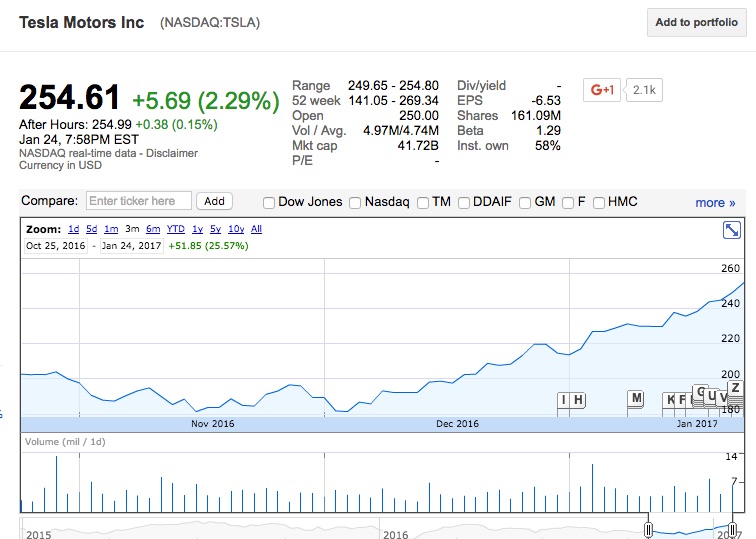News
Trump effect takes hold of Tesla’s (TSLA) stock price
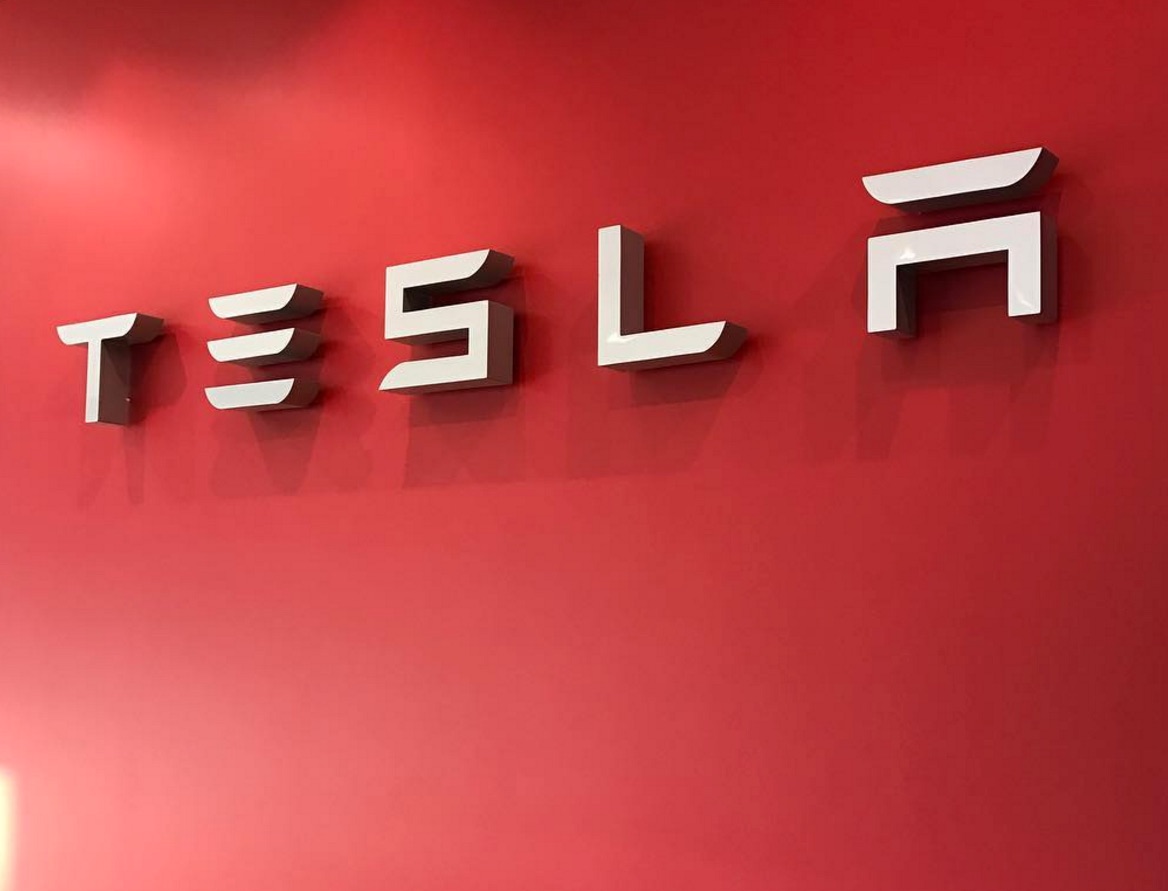
Why has Tesla’s stock price increased so much in value over the past couple of months? What effects have a Trump Presidency had on Tesla stock values? And, overall, why have there been so many skeptics who’ve openly voiced concerns about Tesla’s validity as an investment?
Tesla has seen a pattern in which, due to delivery date misses, analysts have critiqued the company’s overall growth potential. They often wonder aloud whether turning monies back into the Tesla business makes sense for investors. Increasing scrutiny of new competitors for a currently small but potentially significant electric vehicle market has complicated the overall Tesla stock valuation picture.
And then there’s CEO Elon Musk, widely known for working 100 hour weeks while he runs both the Tesla automotive company and SpaceX.
Over the past year, a cycle has taken place in which sliding stock prices are followed by strong public sentiment that pushes stocks prices upward. Helpful for the overall Tesla financial health picture have been carefully placed Tesla news events, model improvements, software updates, or new company acquisitions, such as SolarCity.
What’s changed from late 2016 into early 2017 with TSLA?
TSLA stocks are currently receiving very positive reports from the market. Shares have risen nearly 20% since the beginning of the year and up over 40% from the period between November’s low through January, 2017. Just last week, Morgan Stanley’s lead auto analyst, Adam Jonas raised Tesla’s price target from $242 to $305 with associated higher earnings prediction for fiscal year 2018.
Partially that optimism rises from a view that Tesla can launch its $35,000 Model 3 on schedule. Tesla describes Model 3 targets on its website as production beginning in mid-2017 and delivery estimates for new reservations in mid 2018 or later. Jonas has given the nod to the likelihood that Tesla will be able to create additional business through car-sharing, but also cited a “supportive political environment” as cause for the upgrade.
There’s also Tesla’s short interest, which has jumped 27.8 percent in the past year. Traders have wagered that the Model 3 may not live up to the market’s sky-high expectations.
The Trump effect on TSLA
Possibly the most important reason that TSLA stock has been trading with a brighter outlook is the addition to Musk’s collaboration with newly-elected President Donald Trump. When Musk first agreed to participate as one of Trump’s council of business leaders, much consternation arose among Tesla fans. The President has reiterated a strong stance since then on creating U.S. jobs by bringing the workforce back into the U.S.
But, with Tesla increasing production at its California plant and returns quickly mounting at its Gigafactory in Nevada, the Tesla Effect is jobs, jobs, jobs. Tesla is already well on its way to accelerating the world’s transition to sustainable mobility by producing electric vehicles in sufficient volume and forcing change in the automobile industry.
Trump urged U.S. car manufacturers on Tuesday to build more cars in the U.S as part of a plan to discourage the car industry from investing abroad. In response, the Big Three voiced concerns about fuel efficiency standards, trade policy, and regulatory concerns.
Silencing the roaring bears
With more cash on hand than expected, Tesla has wilted the case of the more aggressive bears. At the end of 2016, analysts noted increased company efficiency, which dampened the previous overarching view that Tesla would need a capital infusion in early 2017. So, too, in Tesla’s favor is its ability to sell carbon credits against its zero emissions vehicles. With former Audi exec Peter Hochholdinger now on payroll to improve and accelerate production, Tesla will also only improve in its production methodology.
As Tesla’s production process shifts to widespread automation through machines that build machines, these and other improvements have diminished the bear case against Tesla. Certainly, 2017 and beyond contain challenges for Tesla. But, at least for now, Tesla has made significant strides to move the Wall Street bulls a lot closer to its point of view.

News
Tesla dispels reports of ‘sales suspension’ in California
“This was a “consumer protection” order about the use of the term “Autopilot” in a case where not one single customer came forward to say there’s a problem.
Sales in California will continue uninterrupted.”
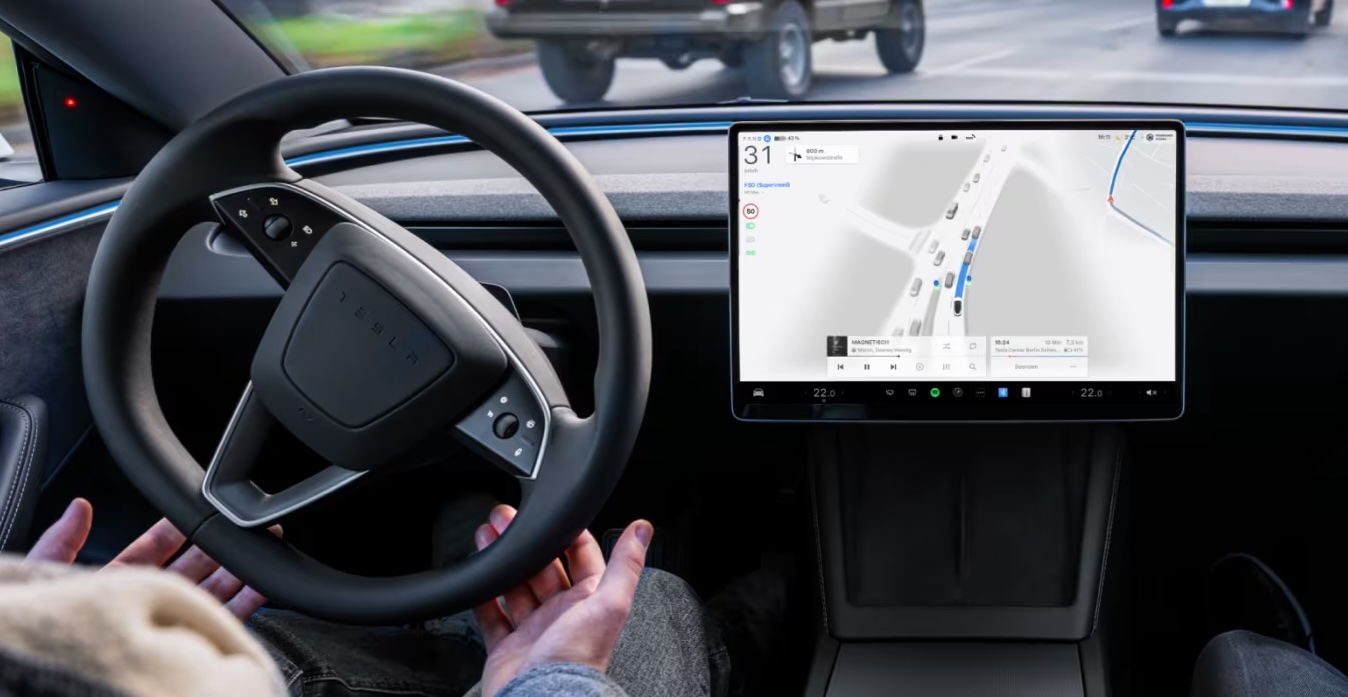
Tesla has dispelled reports that it is facing a thirty-day sales suspension in California after the state’s Department of Motor Vehicles (DMV) issued a penalty to the company after a judge ruled it “misled consumers about its driver-assistance technology.”
On Tuesday, Bloomberg reported that the California DMV was planning to adopt the penalty but decided to put it on ice for ninety days, giving Tesla an opportunity to “come into compliance.”
Tesla enters interesting situation with Full Self-Driving in California
Tesla responded to the report on Tuesday evening, after it came out, stating that this was a “consumer protection” order that was brought up over its use of the term “Autopilot.”
The company said “not one single customer came forward to say there’s a problem,” yet a judge and the DMV determined it was, so they want to apply the penalty if Tesla doesn’t oblige.
However, Tesla said that its sales operations in California “will continue uninterrupted.”
It confirmed this in an X post on Tuesday night:
This was a “consumer protection” order about the use of the term “Autopilot” in a case where not one single customer came forward to say there’s a problem.
Sales in California will continue uninterrupted.
— Tesla North America (@tesla_na) December 17, 2025
The report and the decision by the DMV and Judge involved sparked outrage from the Tesla community, who stated that it should do its best to get out of California.
One X post said California “didn’t deserve” what Tesla had done for it in terms of employment, engineering, and innovation.
Tesla has used Autopilot and Full Self-Driving for years, but it did add the term “(Supervised)” to the end of the FSD suite earlier this year, potentially aiming to protect itself from instances like this one.
This is the first primary dispute over the terminology of Full Self-Driving, but it has undergone some scrutiny at the federal level, as some government officials have claimed the suite has “deceptive” naming. Previous Transportation Secretary Pete Buttigieg was vocally critical of the use of the name “Full Self-Driving,” as well as “Autopilot.”
News
New EV tax credit rule could impact many EV buyers
We confirmed with a Tesla Sales Advisor that any current orders that have the $7,500 tax credit applied to them must be completed by December 31, meaning delivery must take place by that date. However, it is unclear at this point whether someone could still claim the credit when filing their tax returns for 2025 as long as the order reflects an order date before September 30.
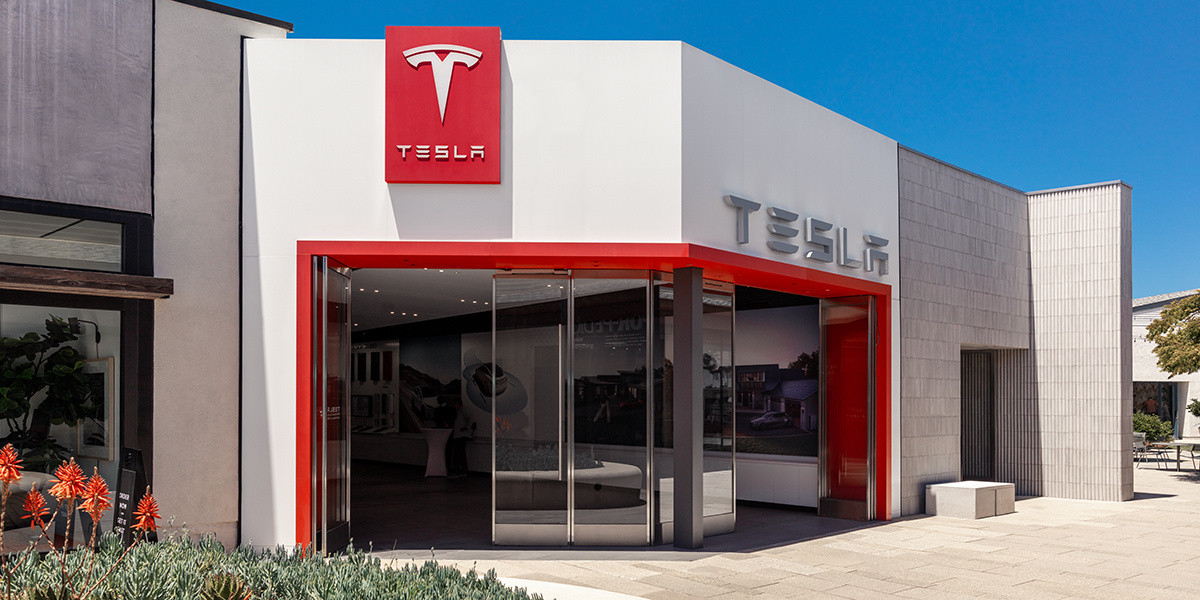
Tesla owners could be impacted by a new EV tax credit rule, which seems to be a new hoop to jump through for those who benefited from the “extension,” which allowed orderers to take delivery after the loss of the $7,500 discount.
After the Trump Administration initiated the phase-out of the $7,500 EV tax credit, many were happy to see the rules had been changed slightly, as deliveries could occur after the September 30 cutoff as long as orders were placed before the end of that month.
However, there appears to be a new threshold that EV buyers will have to go through, and it will impact their ability to get the credit, at least at the Point of Sale, for now.
Delivery must be completed by the end of the year, and buyers must take possession of the car by December 31, 2025, or they will lose the tax credit. The U.S. government will be closing the tax credit portal, which allows people to claim the credit at the Point of Sale.
🚨UPDATE: $7,500 Tax Credit Portal “Closes By End of Year”.
This is bad news for pending Tesla buyers (MYP) looking to lock in the $7,500 Tax Credit.
“it looks like the portal closes by end of the year so there be no way for us to guarantee the funds however, we will try our… pic.twitter.com/LnWiaXL30k
— DennisCW | wen my L (@DennisCW_) December 15, 2025
We confirmed with a Tesla Sales Advisor that any current orders that have the $7,500 tax credit applied to them must be completed by December 31, meaning delivery must take place by that date.
However, it is unclear at this point whether someone could still claim the credit when filing their tax returns for 2025 as long as the order reflects an order date before September 30.
If not, the order can still go through, but the buyer will not be able to claim the tax credit, meaning they will pay full price for the vehicle.
This puts some buyers in a strange limbo, especially if they placed an order for the Model Y Performance. Some deliveries have already taken place, and some are scheduled before the end of the month, but many others are not expecting deliveries until January.
Elon Musk
Elon Musk takes latest barb at Bill Gates over Tesla short position
Bill Gates placed a massive short bet against Tesla of ~1% of our total shares, which might have cost him over $10B by now
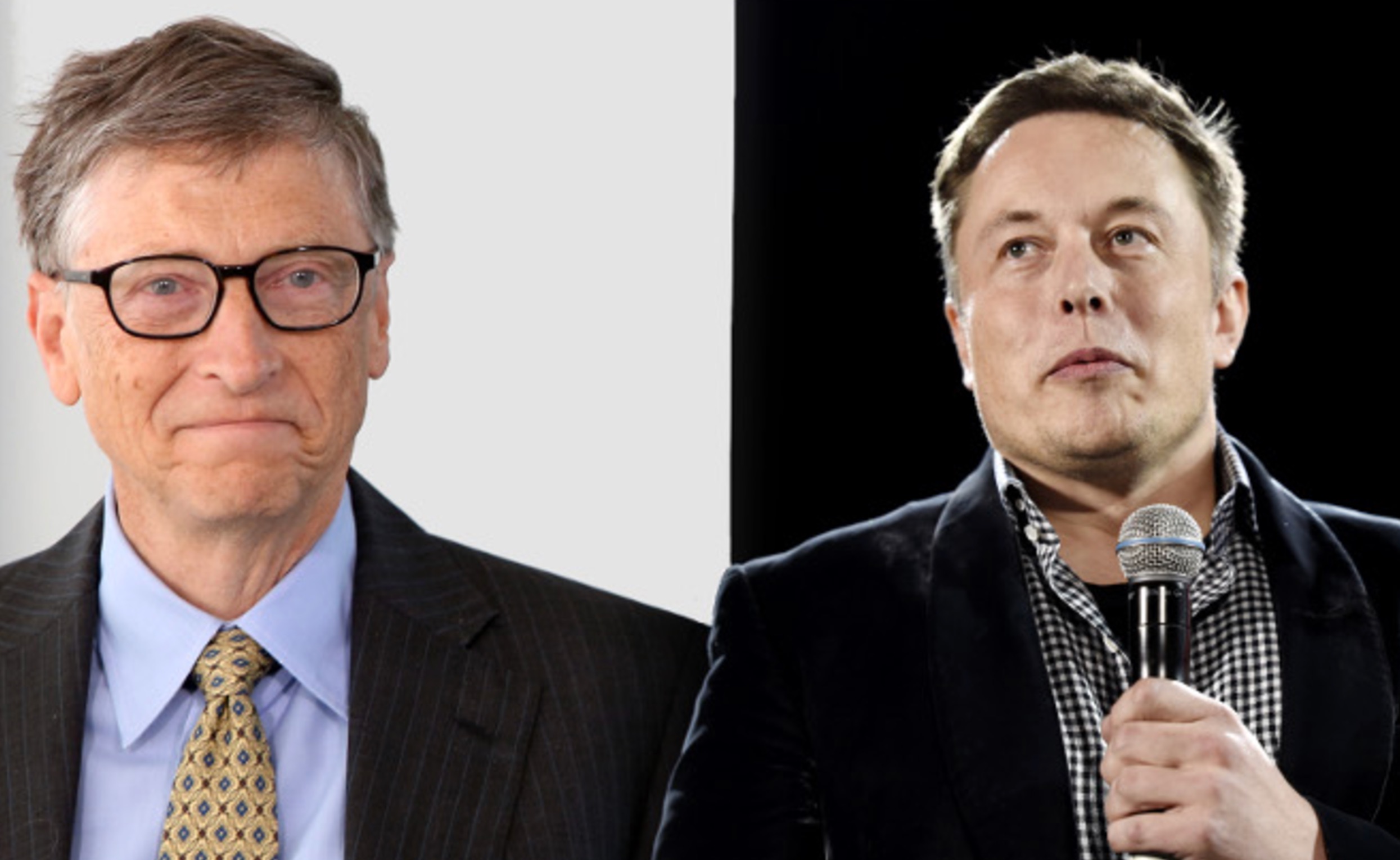
Elon Musk took his latest barb at former Microsoft CEO Bill Gates over his short position against the company, which the two have had some tensions over for a number of years.
Gates admitted to Musk several years ago through a text message that he still held a short position against his sustainable car and energy company. Ironically, Gates had contacted Musk to explore philanthropic opportunities.
Elon Musk explains Bill Gates beef: He ‘placed a massive bet on Tesla dying’
Musk said he could not take the request seriously, especially as Gates was hoping to make money on the downfall of the one company taking EVs seriously.
The Tesla frontman has continued to take shots at Gates over the years from time to time, but the latest comment came as Musk’s net worth swelled to over $600 billion. He became the first person ever to reach that threshold earlier this week, when Tesla shares increased due to Robotaxi testing without any occupants.
Musk refreshed everyone’s memory with the recent post, stating that if Gates still has his short position against Tesla, he would have lost over $10 billion by now:
Bill Gates placed a massive short bet against Tesla of ~1% of our total shares, which might have cost him over $10B by now
— Elon Musk (@elonmusk) December 17, 2025
Just a month ago, in mid-November, Musk issued his final warning to Gates over the short position, speculating whether the former Microsoft frontman had still held the bet against Tesla.
“If Gates hasn’t fully closed out the crazy short position he has held against Tesla for ~8 years, he had better do so soon,” Musk said. This came in response to The Gates Foundation dumping 65 percent of its Microsoft position.
Tesla CEO Elon Musk sends final warning to Bill Gates over short position
Musk’s involvement in the U.S. government also drew criticism from Gates, as he said that the reductions proposed by DOGE against U.S.A.I.D. were “stunning” and could cause “millions of additional deaths of kids.”
“Gates is a huge liar,” Musk responded.
It is not known whether Gates still holds his Tesla short position.
